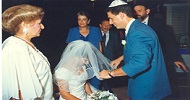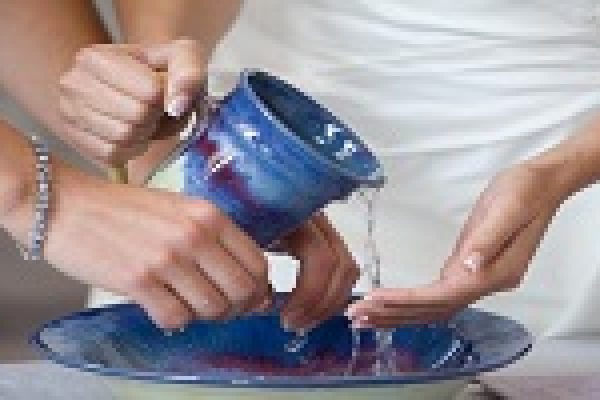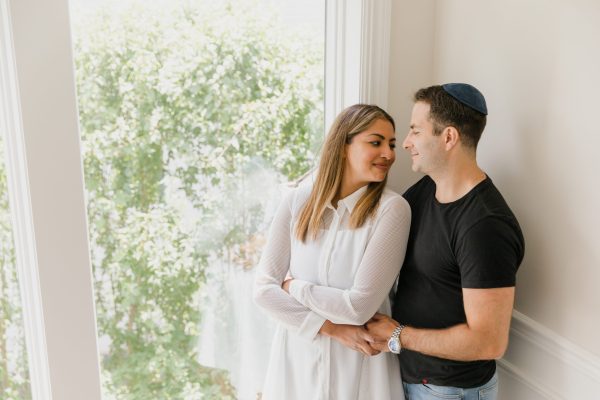Traditionally, prior to the wedding, the groom veils the bride. This custom harkens back to at least two biblical sources: 1. Rebecca, prior to meeting Isaac, veils herself as a sign of modesty; 2. although Jacob intended to marry Rachel, he was tricked by his father-in-law, Lavan, into marrying Leah, Rachel’s older sister. So the groom, prior to veiling the bride, ascertains that he has the right woman. At an Orthodox wedding, the groom will typically be danced by male friends to the bride who sits on a throne-like chair awaiting his arrival. The men come in whooping and singing, and the bride is veiled.
Although this custom had fallen into disuse outside of Orthodox circles, it is making a comeback. The veil has accrued new interpretations—as a recognition of the holiness and awe-filled nature of the moment, as a sign of the preciousness of the bride and groom to each other and as a symbol of God’s protective presence. Many couples have chosen to make this ritual more egalitarian by clothing one another—the groom veils the bride while she helps him into a kittel (groom’s robe) or places a special kippah (yarmulke) on his head. If the couple observes the custom of not seeing each other for a few days prior to the wedding, the bedecken is usually the first time they see one another at the wedding—it is often emotionally charged and very beautiful. Still, some women eschew the veil because of its negative resonance.











